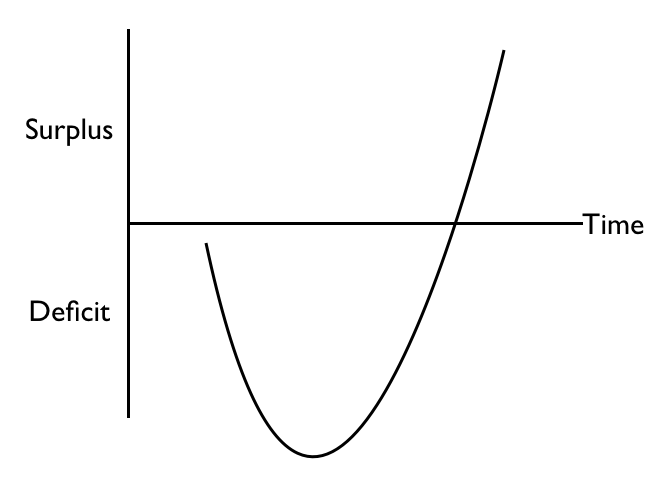If you were asked to jump as far as you could from a certain point, you would probably start by swinging your arms backward before launching yourself forward, or maybe you would take a few steps back to get a running start. Either way you’re finding ways to build momentum by going in the opposite direction to achieve better results in the other.

The same is true within organizations and companies. Many times people think that when you want to take the next step forward you simply move from point “a” to point “b.” It’s not quite that simple, though. Think about a time when you made a significant change in your life. Did you achieve immediate success, or did it require a step backward in order to get where you wanted to be?
The graphical representation of this phenomenon is called the “J” Curve.

With time mapped out on the horizontal axis and success or relative performance on the vertical axis you can see that in the immediate time after the change has been implemented, a lower level of performance is achieved before the curve begins to swing upward, eventually achieving a much higher level of success than the starting point.
Why?
So why do we have to take that step backward? Many times, change requires you to re-learn how to do something. Repetition of any activity over a period of time usually leads to improved and faster performance. So when we change processes, we usually have to start back at square one and we lose all of the efficiencies gained from all those years of repetition. This often happens when trying to delegate tasks. Have you ever said to yourself – “I might as well just do it myself because I can just do that task in half the time it will take to train someone else how to do it.” Yes, in the short term you can do it faster, but by investing time in training someone else to do that task, you will free up more of your time in the future for other possibly more important tasks.
What to do about it…
Don’t let the short term struggles, get in the way of long term success. One of the best things you can do before instituting the change is acknowledge that this will happen and be honest and open with your team about it. When the new change is implemented and doesn’t work right away, it’s easy for the detractors to say “I told you so” and come up with new reasons on why this new plan won’t work. It is during these failures that it is most important for leadership to keep a positive attitude. Remind everyone why the change was implemented and direct their attention to the end goal. With a focus on the potential success that these steps will bring and some patience, you’ll be able to take your business to the next level.



